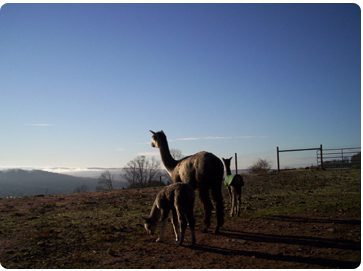[fusion_builder_container hundred_percent=”yes” overflow=”visible”][fusion_builder_row][fusion_builder_column type=”1_1″ background_position=”left top” background_color=”” border_size=”” border_color=”” border_style=”solid” spacing=”yes” background_image=”” background_repeat=”no-repeat” padding=”” margin_top=”0px” margin_bottom=”0px” class=”” id=”” animation_type=”” animation_speed=”0.3″ animation_direction=”left” hide_on_mobile=”no” center_content=”no” min_height=”none”][fusion_imageframe lightbox=”no” lightbox_image=”” style_type=”bottomshadow” hover_type=”none” bordercolor=”” bordersize=”0px” borderradius=”0″ stylecolor=”” align=”right” link=”” linktarget=”_self” animation_type=”0″ animation_direction=”down” animation_speed=”0.1″ hide_on_mobile=”no” class=”” id=””]  [/fusion_imageframe][fusion_text]The alpaca is a member of the camelid family. It is native to the South American antiplano region of the Andes Mountains. It has only been since 1984 that alpacas have been raised in the United States. They are prized for their luxurious fiber and gentle personalities. Alpacas have become extremely attractive to those who are new to the livestock industry for a variety of reasons. Their gentleness and size makes them easy to handle; a mature alpaca weighs only between 135lbs- 185lbs. Alpacas require very little land in comparison to other livestock with a 10 per acre ratio. They are, also, easy on the land because they have soft, padded feet rather than hooves and as they eat, they crop the grass at the ground rather than pull it out by the roots. They don’t require fine grass or grains making them an inexpensive animal to feed. However, maybe the most important factor is that their product (fiber) does not require butchering them. Instead, the alpaca’s beautiful and luxurious fleece is collected through yearly shearings. The charm and beauty of these graceful animals become an added joy to any lifestyle.[/fusion_text][/fusion_builder_column][/fusion_builder_row][/fusion_builder_container]
[/fusion_imageframe][fusion_text]The alpaca is a member of the camelid family. It is native to the South American antiplano region of the Andes Mountains. It has only been since 1984 that alpacas have been raised in the United States. They are prized for their luxurious fiber and gentle personalities. Alpacas have become extremely attractive to those who are new to the livestock industry for a variety of reasons. Their gentleness and size makes them easy to handle; a mature alpaca weighs only between 135lbs- 185lbs. Alpacas require very little land in comparison to other livestock with a 10 per acre ratio. They are, also, easy on the land because they have soft, padded feet rather than hooves and as they eat, they crop the grass at the ground rather than pull it out by the roots. They don’t require fine grass or grains making them an inexpensive animal to feed. However, maybe the most important factor is that their product (fiber) does not require butchering them. Instead, the alpaca’s beautiful and luxurious fleece is collected through yearly shearings. The charm and beauty of these graceful animals become an added joy to any lifestyle.[/fusion_text][/fusion_builder_column][/fusion_builder_row][/fusion_builder_container]

